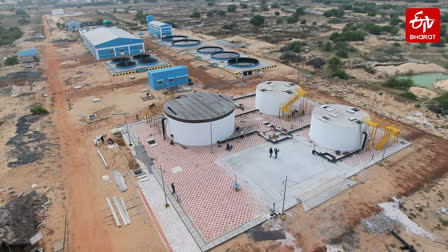Chennai:The National Institute of Ocean Technology (NIOT) has established a land-based Ballast Water Treatment Technologies - Test Facility (BWTT-TF) for testing and validation of ballast water, carried by ships in their ballast tanks to help them maintain stability, balance, and compensate for the weight change due to fuel consumption and different cargo loads. The BWTT-TF, designed to ensure compliance with international regulations of the Ballast Water Convention 2004, will also provide solutions for the development and testing of ballast water treatment technologies.
The need to treat Ballast Water
Transferring seawater from one location to another can introduce foreign microbes, causing significant changes to the marine environment. To address this, the International Maritime Organisation has mandated ballast water treatment to clean stagnant water and remove harmful biological material before it is discharged. In the future, only ships from compliant countries will be permitted to engage in international trade, according to the NIAID panel.
The BWTT-TF will treat the ballast water before it is released back into the sea to prevent the marine environment from changing. The facility, located in the NIOT Sea Front Site at Pamanji & Vagarru villages in Tirupathi District of Andhra Pradesh, aims to reduce the invasive aquatic species and enhance global marine biodiversity.
Talking to ETV Bharat, Dharani Gopal, head of the Marine Biotechnology Group at the National Institute of Ocean Technology, highlighted the ocean's vital role as the cradle of life and a resource provider for 3.5 million years. He emphasised the ocean's influence on human cultural, social, and economic evolution and noted India's progress in marine science and technology. The Marine Biotechnology Group plans to test and certify seawater treatment equipment.
